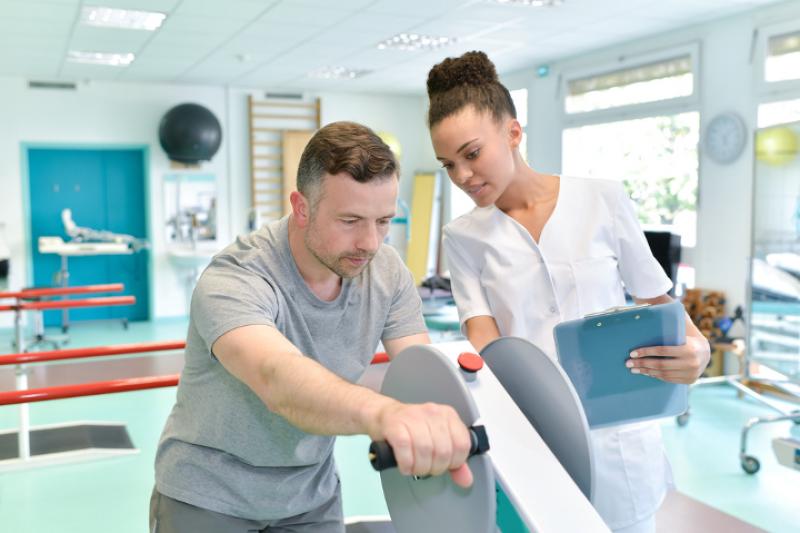7 Tips For Your First Occupational Therapy Visit
Occupational therapy has been helping many people overcome difficulties in their lives after suffering from injuries or debilitating diseases. The treatment plan has helped them regain control of their movements so they can go back to the things they love doing. Aside from recovery after an injury or illness, occupational therapy has also helped many children with developmental delays to grow optimally with other children. Hence, this therapy is beneficial and necessary for many patients.

What Is Occupational Therapy?
Occupational therapy is a form of treatment that helps patients train their minds and bodies to move in a particular way to accomplish a task based on their current situation. It can also address pain and teach patients living with chronic pain how to manage such discomforts daily.
Chronic back pain typically results from incorrect posture, and with occupational therapy, patients are reminded to improve their habits to prevent the pain from getting worse. Sometimes, the therapist would advise them to replace or modify the things they use at home to suitable or ergonomic ones if they use uncomfortable furniture at work.
Many stroke patients who survive often have left or right-side body weakness. And if the patient’s dominant side is affected, an OT or occupational therapist would have to train his mind through activities that teach the non-dominant side. Meanwhile, some stroke patients have their memories affected. And for that, an OT will perform mental exercises to help them remember.
Suppose you need to undergo occupational therapy for your condition. In that case, your insurance can refer 100% coverage providers with a wide range of services, including occupational therapy, chiropractor, physiotherapy, and in-home therapy, to help improve your condition. If you’re scheduled for your first occupational therapy visit, here are some tips for you
1. Get To Know Your Therapist
You will have several sessions with your therapist, so it’s best to try to know them a little bit to have an enjoyable and comfortable time together. Working with someone you’re comfortable and at ease with can get you going through the process, making the therapy much more effective.
2. Don’t Eat A Big Meal
Before your therapy session, it would be best to only take a light meal since a rehabilitative activity, after you just had a severe medical condition, can cause you to be nauseous and light-headed. You may be working on the range of motion of your hands, or they may teach you how to use the bathroom and some kitchen tools. Even if most of these activities are performed sitting down, your body may still not be used to the intensity of the task after lying down in bed and recuperating after a long time.
3. Wear Comfortable Clothes
It would be best to wear gym clothes as this is the most comfortable during a therapy session. A t-shirt will help your OT access your arms and shoulders, and the material of the gym clothing will absorb the sweat you may have from the activities. Leave your accessories and jewelry at home; this will be a hindrance. Try not to wear tight jeans as it could limit your movements.
4. Have Patience
After a stroke or an injury from an accident, moving will be difficult, painful, and frustrating. You must take small baby steps and celebrate even the most minor victories with your therapist. Your brain is like that of a baby after a stroke, and your body will not be very limber after an injury, so it’s best to take things slow and be patient.
You may have heard from your therapist that the first six months of recovery, called the ‘golden period, ‘is the most crucial in therapy after a stroke. But don’t use this as something to pressure yourself to push your body to the limit. Instead, use it as a goal to strive for.
More importantly, don’t punish yourself if you can’t do even the most mundane task. You’re different now. Your body bore the brunt of a terrible illness or a life-altering accident, and you need to cut yourself some slack.
5. Relay Your Pains And Challenges
Let your therapist know of your aches, pains, and challenges. If you’re undergoing therapy because of an injury or a condition like carpal tunnel syndrome, let your OT know where it hurts and which movement is unbearable for you. This way, they can adjust your treatment plan to address those aches and pains.
6. Ask Questions
Don’t hesitate to ask questions. Your OT will welcome your questions and will most likely look forward to them. It’s just natural to have questions because this is your healing journey, and your OT will be in charge of it. So, you must ensure they can provide you with the best care by asking them questions.
7. Take Notes If You Can
A therapy session can seem overwhelming on the first appointment, so you may need to take notes to have something to go back to when you’re doing things on your own. If you’re a mom with a child with cognitive difficulties, taking down notes will be very useful. You can list down the exercises and what it targets so it could help you facilitate the exercises at home with your child.
Conclusion
The road to healing after suffering from a stroke or an injury can be very challenging. An OT could help you return to where you were before the incident or give you independence if you were born with an illness. If you’re meeting with your OT for the first time, remembering the mentioned tips and, most importantly, being patient with yourself will be crucial for your improvement.
More to Read:
Previous Posts:








